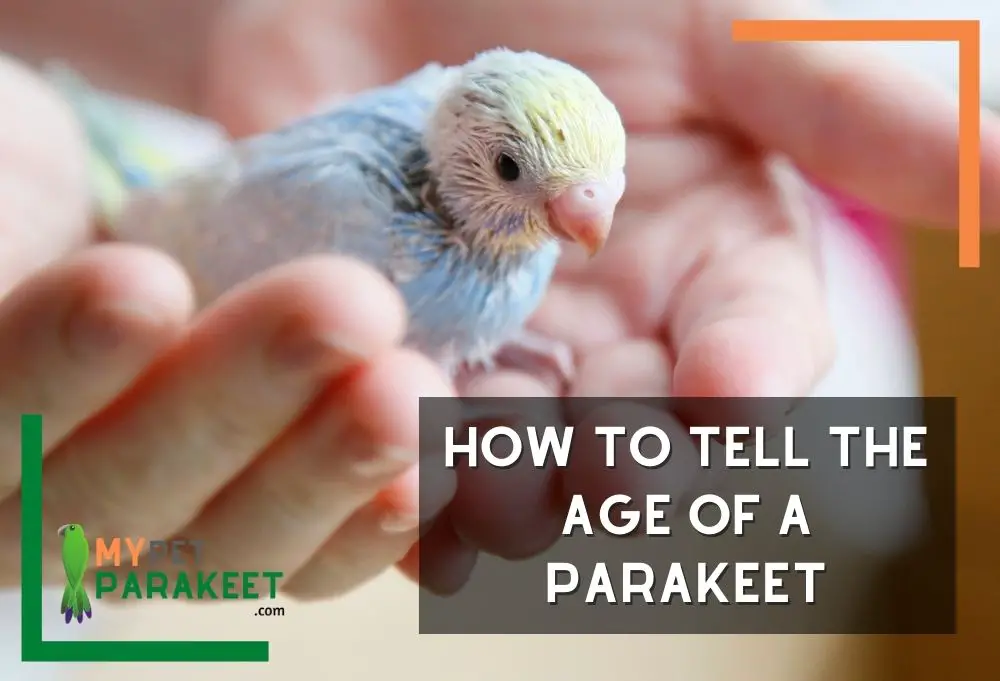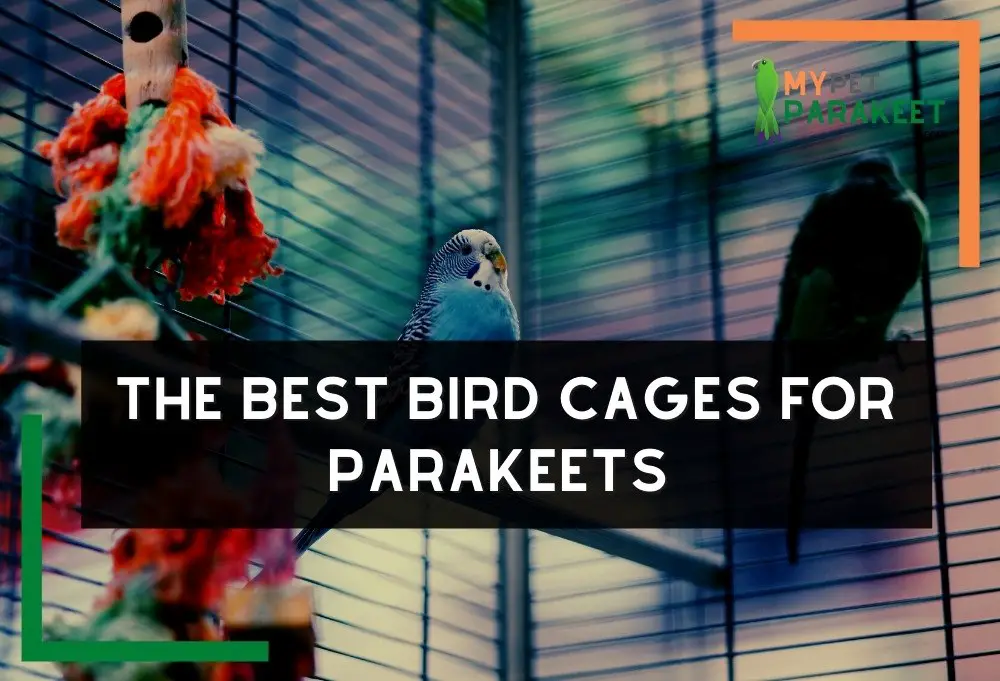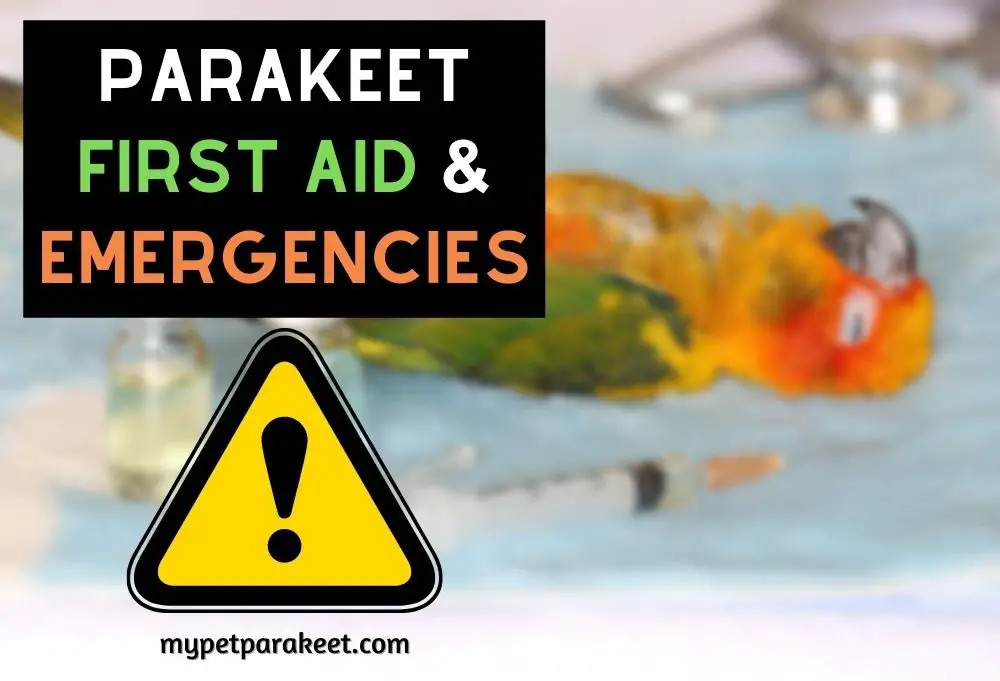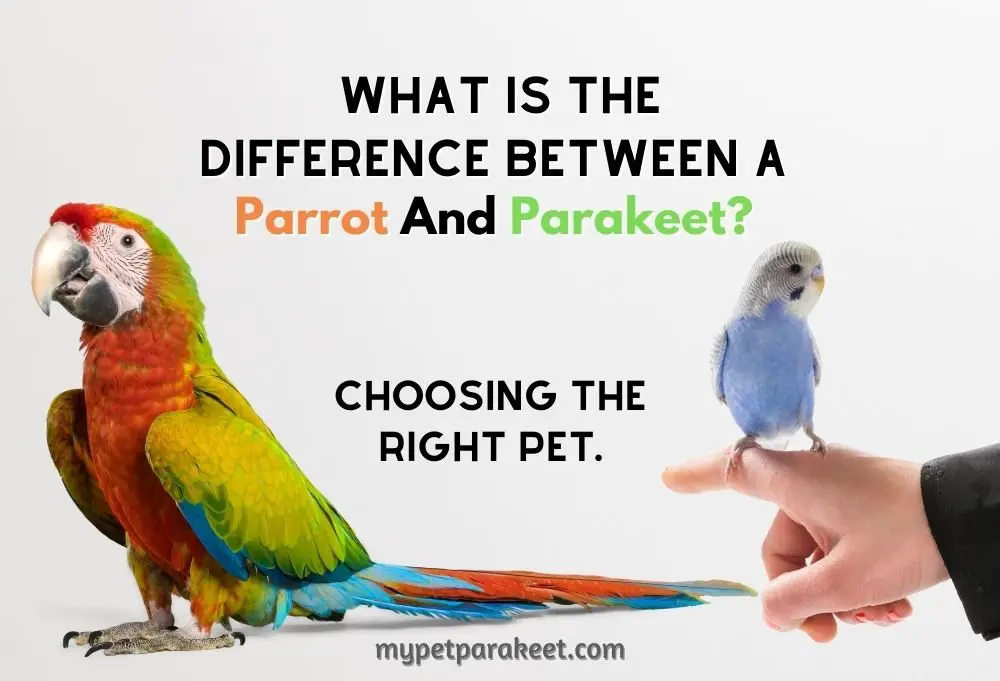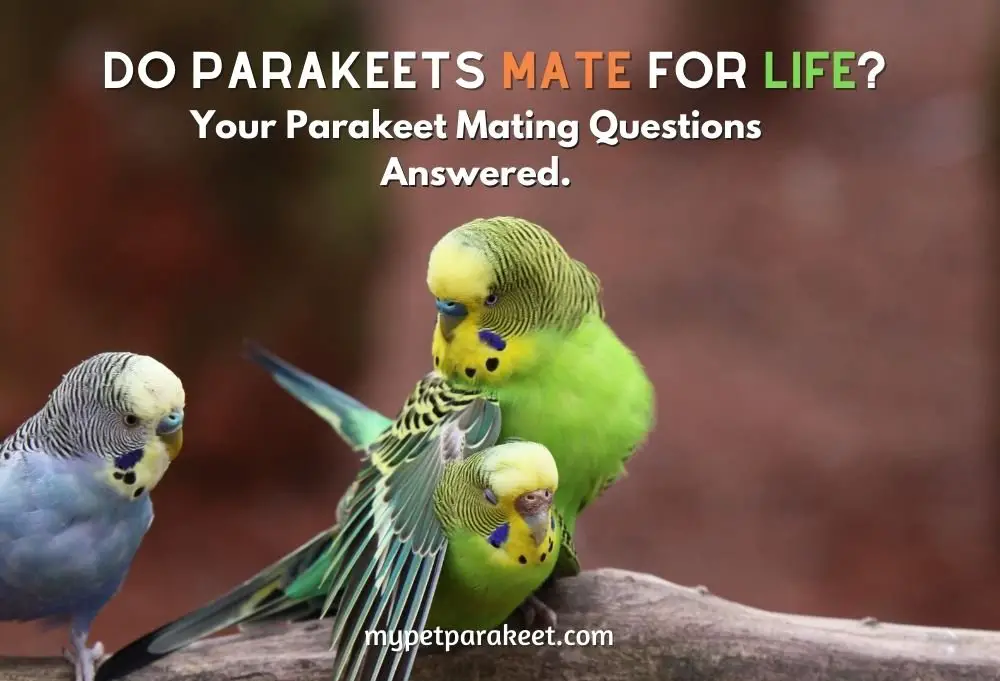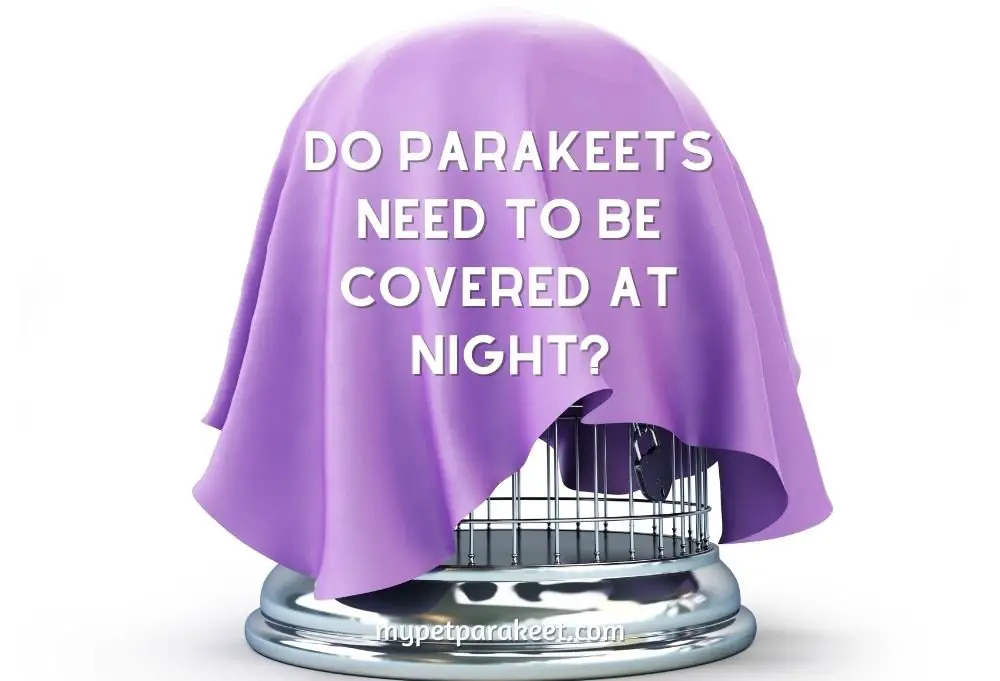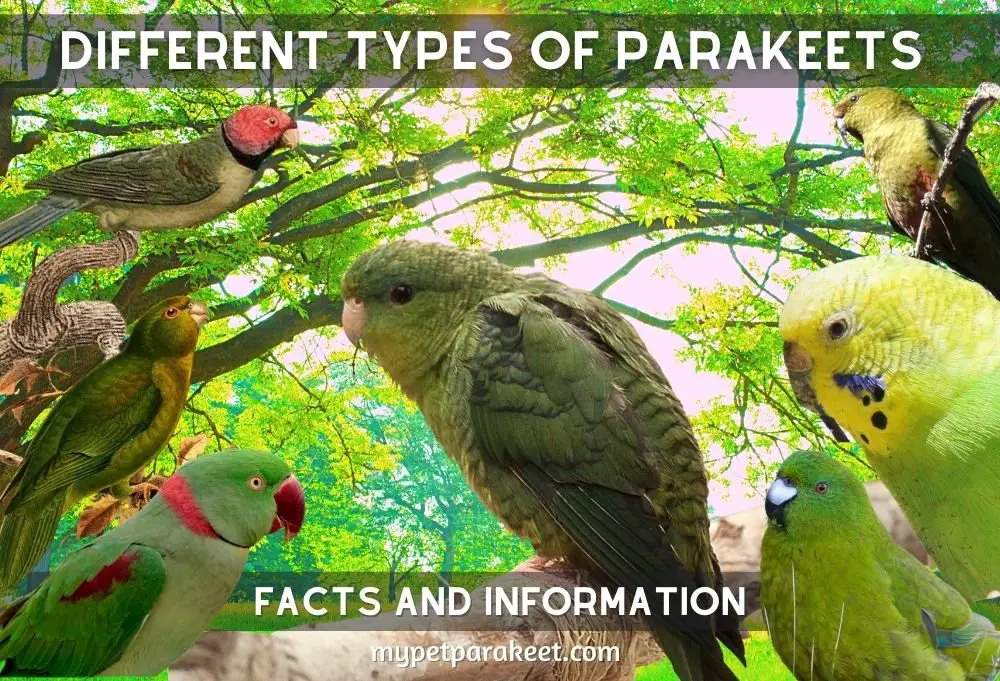Parakeets have different needs depending on how old they are and what stage of life they are in. Knowing your parakeet’s age will ensure you are able to provide the very best care at every stage of their lives!
In this article, we will cover how to tell the age of a parakeet and, provide a comprehensive guide to caring for them at every stage.
Techniques To Determine A Parakeets Age
There is a multitude of ways you can determine your parakeet’s age. If you hatched them yourself, then there are no worries as you already know!
But if you adopt a parakeet with some unknown history and gaps of information where they are from then use our tried and true techniques to help determine the age.
Head Feathering
As parakeets age, their head feathering changes. This is one of the most reliable methods of determining the age of a parakeet.
Parakeets don’t molt their feathers until 3 – 4 months of age. Before the first molt, these baby parakeets will have significant black stripes running horizontally across their heads from the top of their beak all the way over their head to the nape of their neck.
After their first molt, these lovely stripes will disappear and be replaced with a cap of feathers of one color, usually yellow or white depending on the variety of parakeet.
Pretty much all baby parakeets will have these distinctive stripes of their head feathers before their first molt. The only exception being those with genetic disorders such as albino or leucistic birds who will lack the pigment to display stripes.
Eye Colour
All parakeets are born with pure black eyes and lack a defined iris around the pupil from hatch until approximately 8 months, these intense eyes will slowly lighten until they are light grey or brown.
You can use the color of the eyes to age a parakeet. If they are dark black with no visible iris then the bird is likely to be less than 4 months old. From 4 – 8 months the eye will be more dark grey and an iris will start to be more distinctive from the black pupil.
Over 8 months the iris color would have stopped lightening and settled at a light grey or brown.
Cere and Beak Colour
This aging technique is best applied to babies less than 3 months old. Parakeets 12 weeks and under will have ceres (the soft skin above the beak and around the nostrils) that are light pink or white in color.
As the bird ages, the cere develops into a blue, purple, deep pink, or brown color.
The beak color can also potentially help age a parakeet. Some young babies will get a build-up of pigment on their beaks making them look dark, almost black. As they grow up this color will lighten to a soft yellow.
Leg Bands
Many parakeets from reputable breeders will come equipped with their own jewelry in the form of a leg band!
The leg band is designed to have abbreviated information about the bird, its age, and where it has come from so that no matter where it goes it can be traced back to its origins.
Many banders use different color bands to signify the year of birth. Check the band to find out who it was banded by so you can look up their band colors and years.
A common example is the American Budgerigar Society, which will be on the band as “ABS”.
Go to the ABS website to find out what bands are used for each year here. Or see our handy table below for some of ABS most recent bands:
| 2010 | Orange |
| 2011 | Dark Blue |
| 2012 | Red |
| 2013 | Black |
| 2014 | Pastel Green |
| 2015 | Violet |
| 2016 | Orange |
| 2017 | Dark Blue |
| 2018 | Red |
| 2019 | Black |
Quick Guide To Tell The Age Of A Parakeet
See the below table for a summation of aging techniques to help you figure how just how old your parakeet is!
| Traits | < 4 months | 4 – 8 months | > 8 months |
| Eyes | Pure black | Dark grey with emerging iris | Light grey or brown with distinct iris |
| Ceres | Light pink | Blue/pink/brown | Blue/pink/brown |
| Beak | Darkened/black | Light yellow | Light yellow |
| Head feathers | Black-striped “baby bars” | Developed cap | Developed cap |
If you struggle to determine the age with these helpful tips then you should contact the breeder or pet store you got your parakeet off to try and get more information. A vet also will be able to help you determine the age.
How Long Do Parakeets Live For?
Parakeets have an average lifespan of 5 – 8 years, but in captivity reports of parakeets reaching ages of 15 – 20 have been recorded. Read more about captive parakeets lifespan here.
If you compare this to an average human life expectancy then you could determine that 1 parakeet year equates to 8-10 human years.
Signs Of An Elderly Parakeet
The tips above are excellent for determining a specific age for young parakeets, but for adult parakeets, they can be less obvious.
As your parakeet ages, it may be fortunate enough to reach the “elderly” stage. This stage requires specific care so use these tips to identify if your parakeet has reached old age:
- Scruffy – as birds age their feather quality will reduce. You may see this as a “scruffy” looking parakeet but it will also look dull and lacking in lustre. This is due to reduced resources for feather formation and the preening oil gland. As well as less preening in general.
- Overgrown nails/beaks – aging birds are less active, chew less and groom less so their beaks and nails can easily become overgrown. It’s not uncommon for elderly parakeets to need regular beak and nail trims.
- Cloudy eyes – eyes are often the first to deteriorate with older parakeets. This may come in the form of a cataract, in which the first symptom will be cloudy eyes.
- Inactivity – older birds can tired and sore and will have lower activity than their high energy younger counterparts.
- Stiff movements – arthritis is common in elderly birds as their joints tire. You may see your parakeet moving stiffly or even losing the ability to fly.
Be aware, that many of the signs of an old parakeet are similar to that of a sick parakeet. If you know your parakeet is still young and displays these signs, there may be something amiss.
How To Care For Parakeets Based On Their Age
Babies < 4 months
Baby parakeets 6 weeks and under should be cared for by their parents for the best chance at life. Once they reach 6 weeks and they are fully feathered and they start to wean.
At this point, they explore and eat on their own. This is the best time to begin handling them if you want a hand-tamed parakeet!
Baby parakeets will have a lowered immune system as they are still growing and developing. Ensure you only handle them with clean, dry hands as not to expose them to harmful bacteria.
When they are young is the best time to introduce them to a great, balanced diet. Feed them a variety of healthy and nutritious food so do they do not grow up to be a picky eater, as many parakeets often do.
Adolescents 4 – 8 months
Not quite babies and not yet adults, adolescent parakeets are still developing and learning about the world around them.
This is when they will push boundaries. At this time you should be focusing on handling, socializing, and basic training so your young parakeet grows to be a pleasant parakeet with some manners.
Hormonal activity will also start to emerge, make sure they have plenty of calcium to support this time of development. You may see some aggression and territorial behavior, this will remain just a phase as long as you don’t positively reinforce negative behaviors!
Your parakeet may start to learn to talk around this stage also. Remember they are impressionable so watch your language around them unless you want a potty-mouthed parakeet.
Adults > 8 months
Once your parakeet reaches adulthood, you should ensure they have the correct setup to ensure healthy behaviors. Providing nest boxes for female parakeets will help her channel her breeding instincts.
You should also provide plenty of nesting material and toys to prevent them from having destructive chewing behavior.
Elderly > 8 years
As your parakeet ages, its care should change as it changes.
Elderly parakeets have lower immune systems so cleanliness is paramount as well as taking great care if you need to introduce it to new birds, pets or humans.
Elderly parakeets can start to develop health issues such as:
- Cataracts – cloudy eyes from cataracts can affect vision, see a vet if you notice cloudy eyes. Some treatment is available to reduce pain but usually, vision will not return.
- Arthritis – stiffness from age will reduce mobility. Adjust the enclosure so your old parakeet can get around easily and comfortably.
- Weight changes – metabolism changes in old age. Monitor your parakeet closely for obesity or weight loss and adjust the diet accordingly.
You should be taking your elderly parakeet to the vet more often for health screenings to monitor its health closely as health issues can appear rapidly.
Conclusion
Using the physical characteristic and behaviors of your parakeet you can determine their age.
Additionally, using our care guide you can provide them with personalized care based on their age to ensure they live out their lives with all that they need to thrive!

